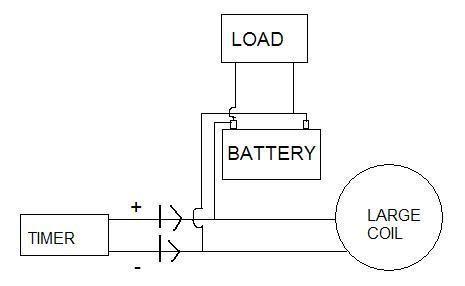Hi Allcanadian,
I like how you compare em forces with physical ones. What I found most interesting is the comparison between inductance and inertia.
but in the physical world, inertia is pretty much a constant. For example, and object will show x amount of resistance to changes in velocity and that object will then require x amount of force to bring it back to its original velocity.
But with electronics we can play around with this rule.
If we were to use a standard bedini circuit as an example, say we charged 2 coils in parellel and it took x amount of energy to get the "electrons" up to speed. We then discharge the coils in parellel and they then apply x amount of force to the charging battery.
But what if we set it up so that there was less inductance (inertia) when charging the coils and more inductance (inertia) the moment they discharge.
In the physical world, wouldn't this be the equivalant of using 1 joule of force to bring an object up to 1 km/h and then it exerting 2 joules of force once it hits something?
To give you an example of a circuit that I think incoporates 2-stage inductance see the schematic below. This is the circuit I am currently testing. It isn't showing twice the input on the output but charge rate is still good.
note. I try alot of variations of John's circuits and as usual I do not suggest that it is an imporvement over the original circuit. I try variations just to see what happens so I can better my understanding. This is just an experimental model.
I like how you compare em forces with physical ones. What I found most interesting is the comparison between inductance and inertia.
but in the physical world, inertia is pretty much a constant. For example, and object will show x amount of resistance to changes in velocity and that object will then require x amount of force to bring it back to its original velocity.
But with electronics we can play around with this rule.
If we were to use a standard bedini circuit as an example, say we charged 2 coils in parellel and it took x amount of energy to get the "electrons" up to speed. We then discharge the coils in parellel and they then apply x amount of force to the charging battery.
But what if we set it up so that there was less inductance (inertia) when charging the coils and more inductance (inertia) the moment they discharge.
In the physical world, wouldn't this be the equivalant of using 1 joule of force to bring an object up to 1 km/h and then it exerting 2 joules of force once it hits something?
To give you an example of a circuit that I think incoporates 2-stage inductance see the schematic below. This is the circuit I am currently testing. It isn't showing twice the input on the output but charge rate is still good.

note. I try alot of variations of John's circuits and as usual I do not suggest that it is an imporvement over the original circuit. I try variations just to see what happens so I can better my understanding. This is just an experimental model.






Comment